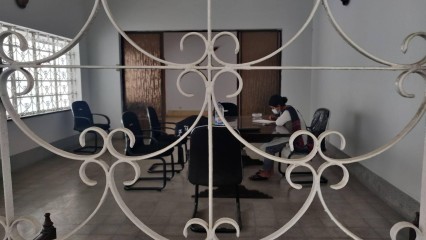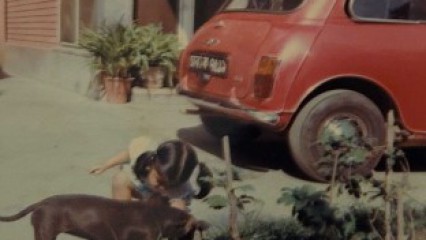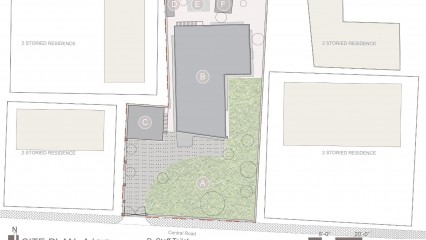A staircase runs from the backyard that provides the only access to the rooftop. The rooftop served as a space for drying clothes, as well as a place where the cable television antenna was set up.
[email protected]
Dhaka, Bangladesh

The oldest part of the landscape, the mango tree, is as old as this house. It has been there providing fruits and shade not just to the residents but also to the neighborhood. A passerby would often see Asaf Khan’s children hanging from the trees, playing in the lawn, walking on boundary walls and generally spending time indoors, rather than outdoors.
The current caretaker stated, even today, they allow children from the surrounding area to enjoy the sweet mangoes from this tree.

According to the eldest daughter of the owner, Ms. Nehrir Khan, a balcony at the back was converted into a nursery, after she was born. However, her parents quickly decided not to keep her there, and it was then turned into a play area for the kids. Later on, when her younger sister was born, both sisters stayed in that room on a bunk bed. Another major change was the addition of a sliding door between the drawing and dining space in the late 1980s. As Asaf Khan often entertained many guests, the partition provided privacy between them and the other family members on such occasions.

The building was built at the back of the property keeping a large green lawn on the south, which was a symbol of social status and also provided environmental benefits. The lawn was sometimes used by the children to play cricket, as a get-together spot for relatives or sometimes as home for the pet animals of the owner. This landscape element – the lawn – has always been an integral part of houses of this type, making the house as a kind of a bungalow pavilion.

The house was designed in 1969 by a German architect based on the design of an existing house in Eskaton. The current owner’s family bought the house in 1973, and made no structural changes to the house. The only major change made was in partially converting the large garden into a basketball court. A wooden lattice was also added to the balcony. The lawn in front of the house was used for multiple purposes such as a playfield, a garden and even as a space to organize barbecue parties.
![]()
The project “Hidden Heritage: Homes in Dhaka” forms part of a larger research framework on “Silent Heritage: Buildings in Bangladesh” focusing on homes and other significant buildings, from the rural to the urban, and from the Mughal to the Modern.
[email protected]
Dhaka, Bangladesh